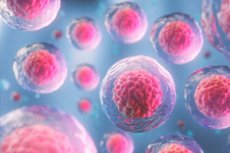
你可能听说过菠菜和牛排中可以补充铁。你或许也知道,铁是一种必需的微量营养素,也是血红蛋白的主要成分。血红蛋白是红细胞中的一种蛋白质,负责将氧气从肺部输送到身体的各个部位。
铁的一个鲜为人知的重要功能是它参与某些免疫细胞的能量产生。
在我们实验室最近发表的一项研究中,我们发现阻止或限制铁流入免疫细胞可能会缓解由过敏原引发的哮喘发作的症状。
需要铁的免疫细胞
哮喘发作时,无害的过敏原会激活肺部一种名为ILC2(内在淋巴细胞2型)的免疫细胞。这会导致它们增殖并释放大量细胞因子(免疫细胞用来进行通讯的信使),从而引发不必要的炎症。最终会导致咳嗽、喘息等症状,让人感觉呼吸道收缩。
为了评估铁在肺部ILC2功能中的作用,我们在实验室中对ILC2进行了一系列实验。随后,我们在患有过敏性哮喘的小鼠和不同程度哮喘的患者中验证了我们的发现。
实验结果
首先,我们发现ILC2利用一种名为转铁蛋白受体1 (TfR1) 的蛋白质来吸收铁。当我们在ILC2激活时阻断这种蛋白质时,细胞就无法利用铁,也无法像以前那样有效地复制和引发炎症。
然后,我们使用了一种叫做铁螯合剂的化学物质来阻止ILC2吸收铁。铁螯合剂就像超级磁铁一样吸附铁,在医学上用于治疗体内铁含量过高的情况。
当我们用螯合剂剥夺ILC2的铁时,这些细胞被迫改变其新陈代谢,转向不同的能量获取方式,就像从跑车换成了自行车一样。这些细胞不再像以前那样有效地引发肺部炎症。
接下来,我们限制了因ILC2活性而导致呼吸道敏感的小鼠的细胞铁含量。我们通过三种不同的方法实现了这一目标:抑制TfR1、添加铁螯合剂,或使用一种名为mini-hepcidin的合成蛋白诱导降低总铁水平。这些方法均有助于降低小鼠的呼吸道高反应性,从而实际上减轻了其哮喘症状的严重程度。
最后,我们观察了哮喘患者的细胞。我们注意到一个有趣的现象:ILC2细胞上的TfR1蛋白越多,哮喘症状就越严重。换句话说,铁在哮喘的严重程度中起着重要作用。阻断TfR1并使用铁螯合剂可以降低ILC2的增殖和细胞因子的产生,这表明我们在小鼠中的发现也适用于人类细胞。这意味着我们可以尽快将这些研究成果从实验室转移到临床试验中。
哮喘的铁疗法
铁就像管弦乐队的指挥,指挥ILC2等免疫细胞在哮喘发作时如何运作。缺乏铁,这些细胞就无法产生那么多麻烦,这可能意味着哮喘症状会减少。
接下来,我们正在研究在哮喘发作期间靶向患者的免疫细胞。如果我们能够在不降低体内铁含量的情况下减少ILC2细胞可利用的铁含量,就有可能开发出一种新的哮喘疗法,不仅能缓解症状,还能解决疾病的根本病因。目前的治疗方法可以控制症状,维持患者生命,但无法治愈疾病。基于铁的疗法或许能为哮喘患者提供更好的解决方案。
我们的发现不仅适用于哮喘,它或许还能改变其他与ILC2相关的疾病,例如湿疹和2型糖尿病。谁能想到铁对免疫系统如此重要呢?
《对话》杂志发表的一篇文章详细描述了这项研究的结果。

